Learn how to make fermented cabbage at home with this simple recipe. Perfectly tangy and packed with probiotics, it’s a healthy and delicious side dish!
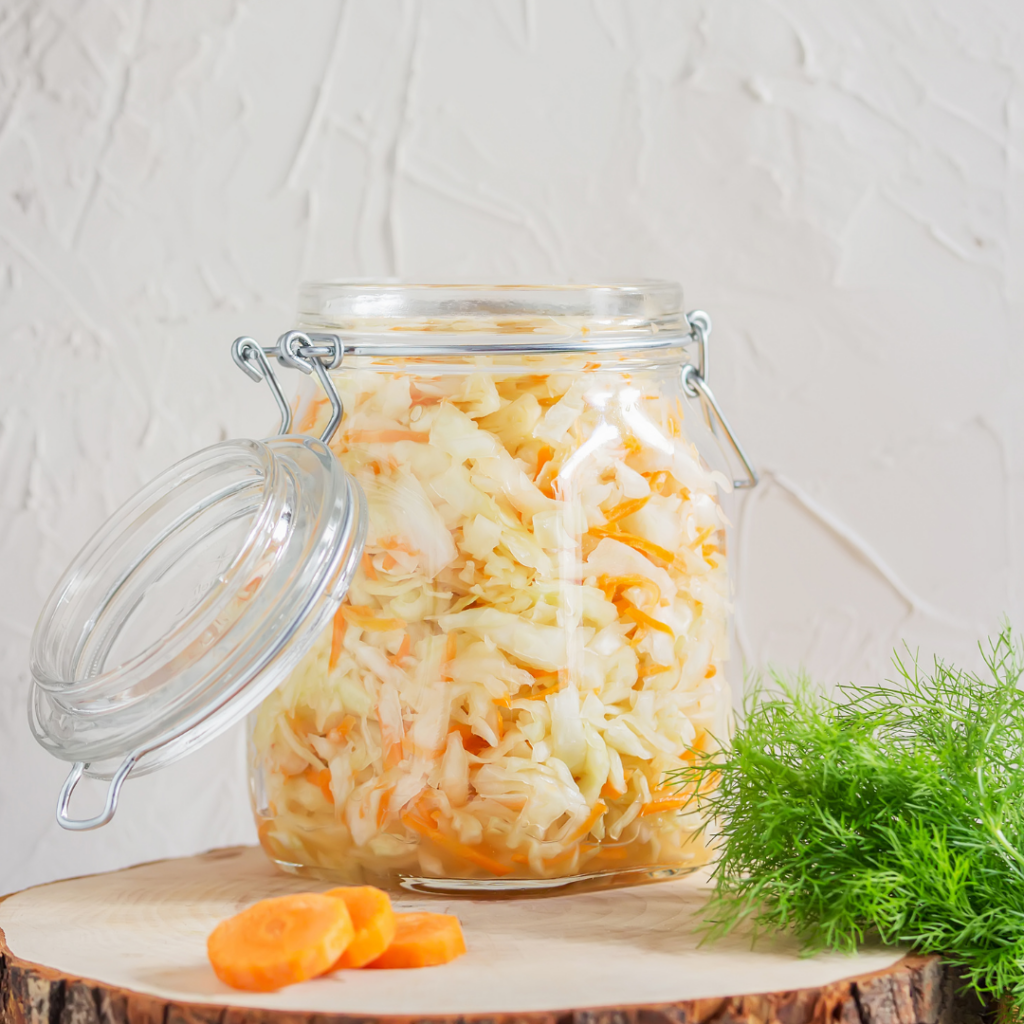
Why You’ll Love This Fermented Cabbage Recipe
This fermented cabbage recipe is a simple yet rewarding way to create a nutritious and flavorful addition to your meals. Not only is it packed with gut-friendly probiotics that support digestion and overall health, but its tangy, slightly salty taste also elevates any dish it’s paired with. Made with just a few basic ingredients, it’s budget-friendly and easy to prepare at home. Plus, the natural fermentation process preserves the cabbage, allowing you to enjoy its benefits for weeks. Whether you’re a fan of traditional sauerkraut or exploring fermentation for the first time, this recipe is sure to become a favorite!
Benefits of Fermented Cabbage
- Rich in Probiotics: Fermented cabbage is packed with beneficial bacteria that support gut health, improve digestion, and boost your immune system.
- High in Nutrients: It’s a great source of vitamins C and K, as well as antioxidants that fight inflammation and promote overall well-being.
- Improves Nutrient Absorption: The fermentation process makes nutrients more bioavailable, helping your body absorb them more efficiently.
- Supports Heart Health: The potassium content in cabbage can help regulate blood pressure, while probiotics may reduce cholesterol levels.
- Promotes Healthy Digestion: Its fiber content helps maintain a healthy digestive system and prevent constipation.
How Often Should You Eat Fermented Cabbage?
Incorporating fermented cabbage into your diet 2–3 times a week is a great start. A small portion, like a few tablespoons, can provide plenty of benefits without overwhelming your palate. It’s ideal as a side dish, salad topping, or even added to sandwiches for a tangy boost!
Ingredients
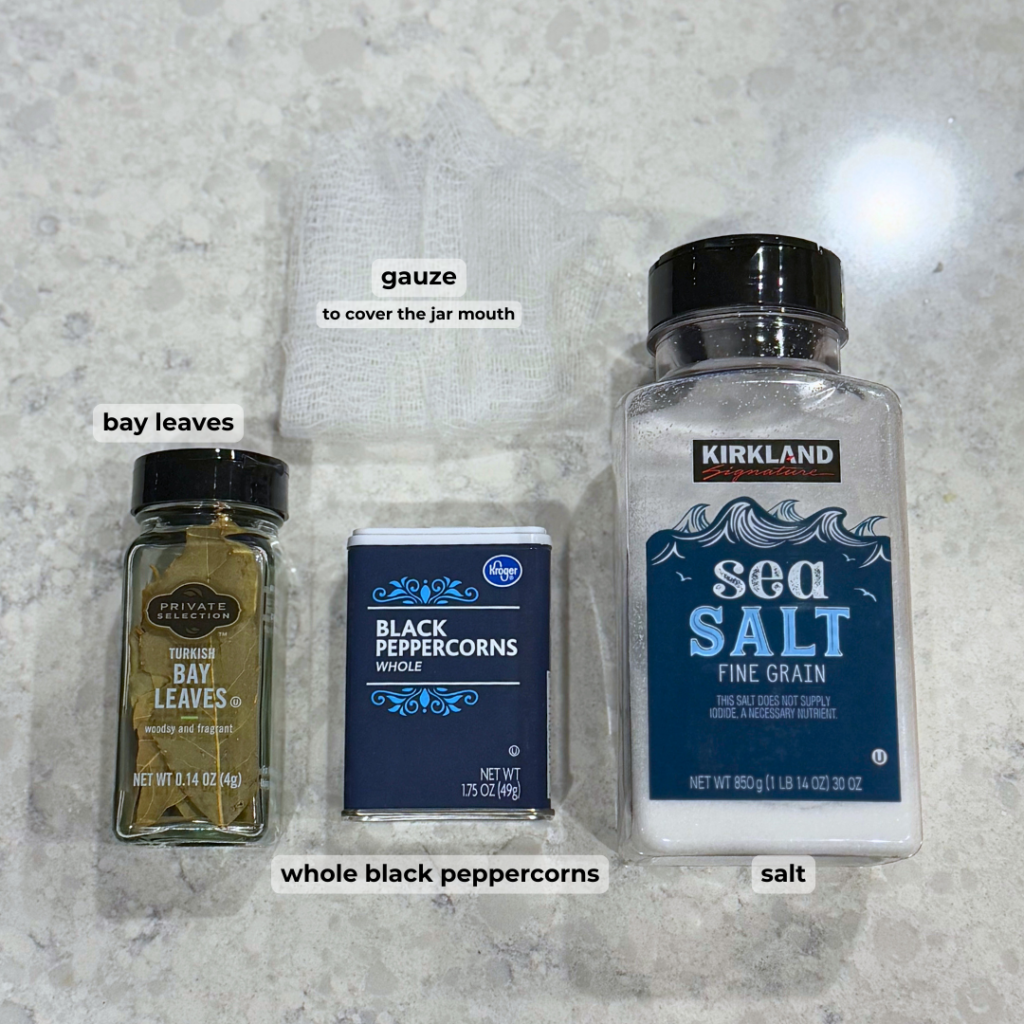
- 1 white/green cabbage
- 1 carrot
- salt
- whole peppercorns
- bay leaves
- gauze to cover the jar mouth
Instructions for Fermented Cabbage (Sauerkraut)
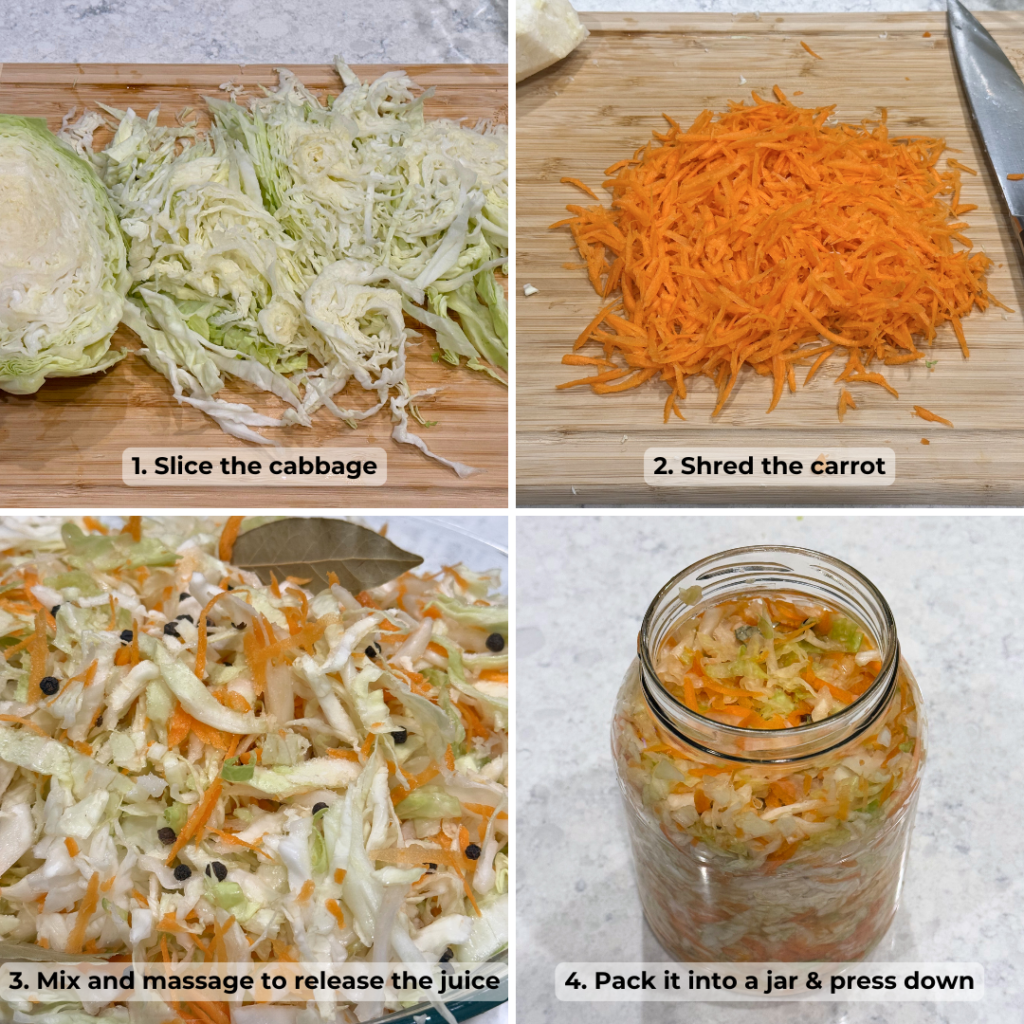
- Prepare the Vegetables:
- Finely slice the cabbage.
- Grate the carrot.
- Season:
- Add whole peppercorns, salt to taste, and bay leaves.
- Mix and Massage:
- Combine the ingredients in a large bowl.
- Massage the mixture with your hands until it releases its natural juices.
- Pack into a Jar:
- Transfer the mixture into a sterilized glass jar, pressing it down firmly to eliminate air pockets and submerge it in its juices.
- Allow Ventilation:
- Cover the jar with a breathable cloth or a lid that allows airflow (e.g., with a fermentation weight or a loose-fitting lid). This prevents pressure buildup while allowing the cabbage to ferment properly.
- Place a tray or plate under the jar to catch any liquid that may overflow during the fermentation process.
- Pierce the Mixture:
- Use a knife or skewer to release trapped air pockets in the jar 2-3 times every day, then press the mixture down once again to submerge into liquid.
- Observe the Fermentation:
- Initially, the liquid will look cloudy. Over time, it will become clear, which indicates the fermentation is complete. This typically takes about one week.
- Enjoy:
- Once ready, store your fermented cabbage in the refrigerator to stop the fermentation process. Serve as a side dish or incorporate it into your favorite recipes!
Recipe Tips
Use Fresh Ingredients: Choose firm, fresh cabbage and vibrant carrots for the best flavor and texture. Avoid wilted or old produce.
Massage Thoroughly: Massaging the cabbage and carrot with salt is crucial to release their natural juices, which serve as the brine for fermentation.
Pack Tightly: Press the mixture firmly into the jar to eliminate air pockets. This helps create an anaerobic environment necessary for proper fermentation.
Keep it Submerged: Ensure the cabbage stays below the brine to prevent mold. You can use a fermentation weight or a small, clean plate to keep it pressed down.
Adjust Salt Levels: Typically, 2% salt by weight of the vegetables is ideal. Too little salt can lead to spoilage, while too much may slow fermentation.
Store at Room Temperature: Ferment in a cool, dark place at 65–72°F (18–22°C) for consistent results. Extreme temperatures can disrupt the process.
Taste Test: Start tasting the cabbage after 5 days to check its flavor. Fermentation time can vary depending on the temperature and your taste preference.
Use Clean Tools: Always use clean jars, utensils, and hands to minimize the risk of contamination.
Be Patient: The longer it ferments, the tangier it becomes. If you prefer milder flavors, stop the process earlier; for stronger flavors, let it ferment longer.
Store Properly: Once fermentation is complete, seal the jar tightly and refrigerate to preserve freshness and halt further fermentation.
With these tips, your fermented cabbage will turn out delicious and packed with health benefits every time!
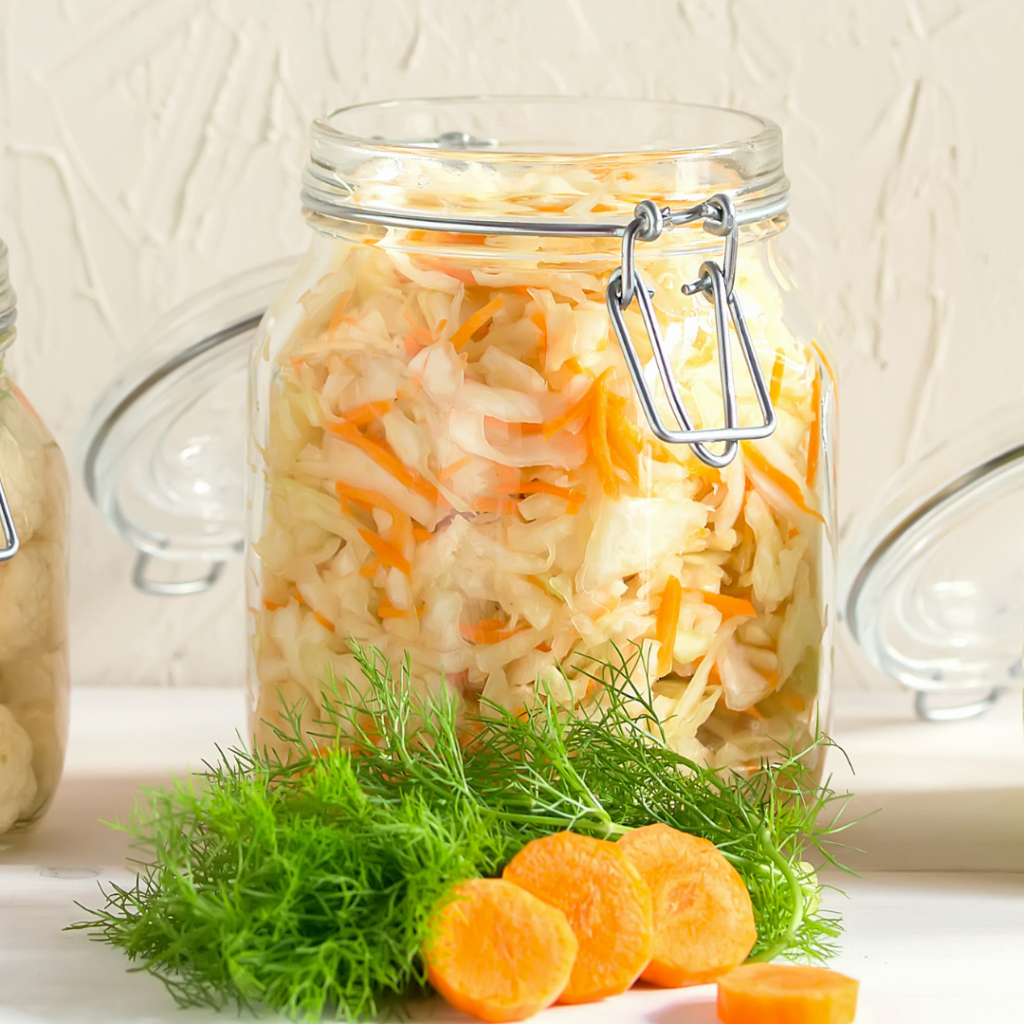
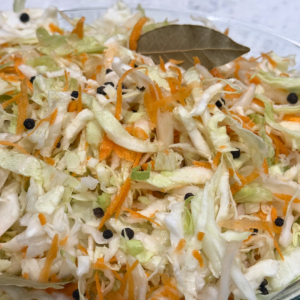
Fermented Cabbage (Sauerkraut)
Equipment
- medium jar
Ingredients
- 1 white cabbage
- 1 carrot
- salt
- whole peppercorns
- bay leaves
Instructions
- Prepare the Vegetables:Finely slice the cabbage.Grate the carrot.
- Season:Add whole peppercorns, salt to taste, and bay leaves.
- Mix and Massage:Combine the ingredients in a large bowl.Massage the mixture with your hands until it releases its natural juices.
- Pack into a Jar:Transfer the mixture into a sterilized glass jar, pressing it down firmly to eliminate air pockets and submerge it in its juices.
- Allow Ventilation:Cover the jar with a breathable cloth or a lid that allows airflow (e.g., with a fermentation weight or a loose-fitting lid). This prevents pressure buildup while allowing the cabbage to ferment properly.Place a tray or plate under the jar to catch any liquid that may overflow during the fermentation process.
- Pierce the Mixture:Use a knife or skewer to release trapped air pockets in the jar 2-3 times every day, then press the mixture down once again to submerge into liquid.
- Observe the Fermentation:Initially, the liquid will look cloudy. Over time, it will become clear, which indicates the fermentation is complete. This typically takes about one week.
- Enjoy:Once ready, store your fermented cabbage in the refrigerator to stop the fermentation process. Serve as a side dish or incorporate it into your favorite recipes!
Storing the Fermented Cabbage
Once your fermented cabbage is ready and stored in the fridge, it can last several months, typically 3 to 6 months or even longer if kept in an airtight jar and fully submerged in its brine. The flavor will continue to develop over time, becoming more tangy.
To ensure freshness:
- Always use a clean utensil to scoop out portions (never your hands).
- Keep the cabbage fully submerged in the brine to prevent spoilage.
- Check for any off smells, mold, or slimy texture, which indicate it’s time to discard it.
If stored properly, it stays delicious and safe to eat for months!
Conclusion
Fermenting cabbage at home is not only easy but also incredibly rewarding. With just a few simple ingredients and a bit of patience, you can create a tangy, probiotic-rich dish that’s as versatile as it is nutritious. Whether you enjoy it as a side, a topping, or a key ingredient in your favorite recipes, fermented cabbage is a fantastic way to boost your meals with flavor and health benefits. Give this recipe a try, and discover the joy of homemade fermentation!
